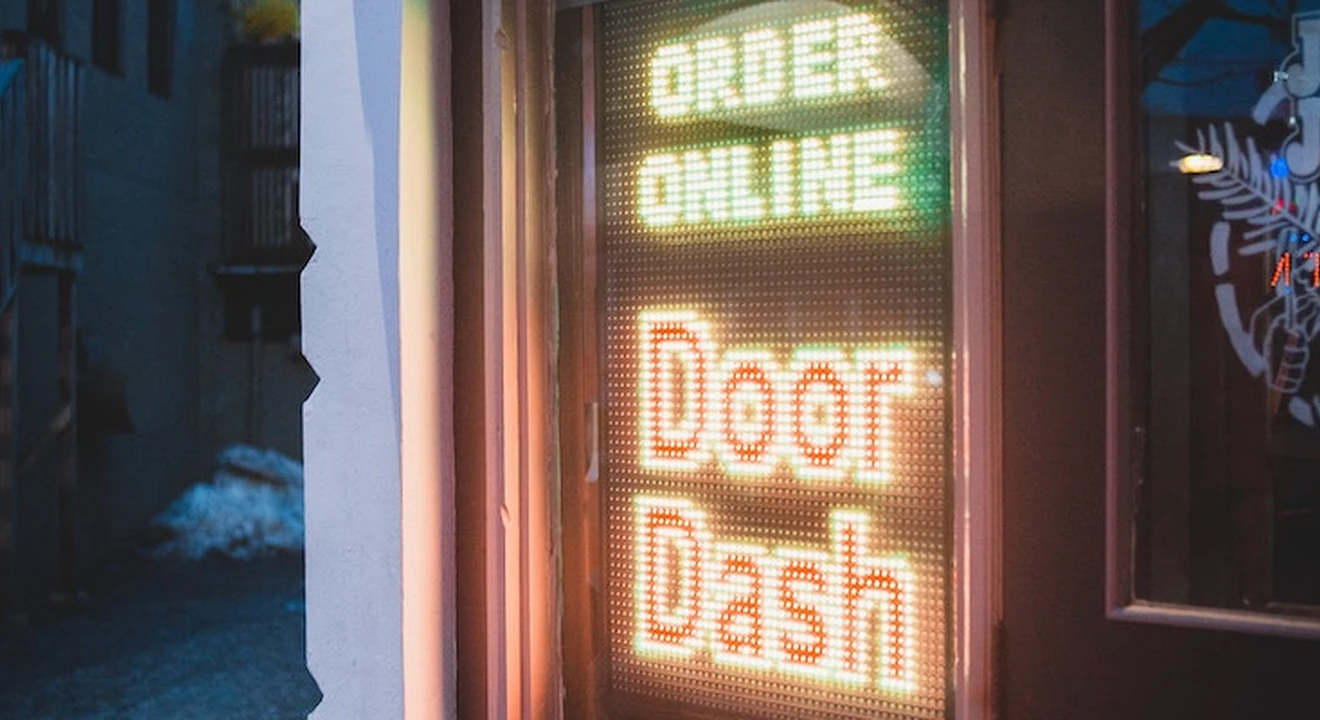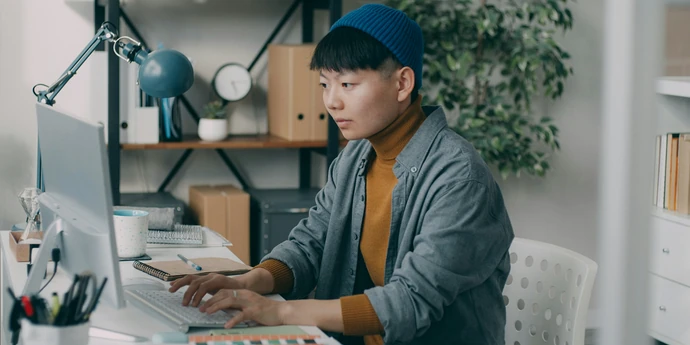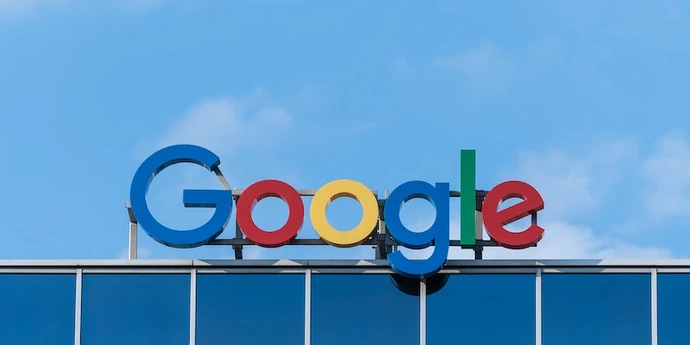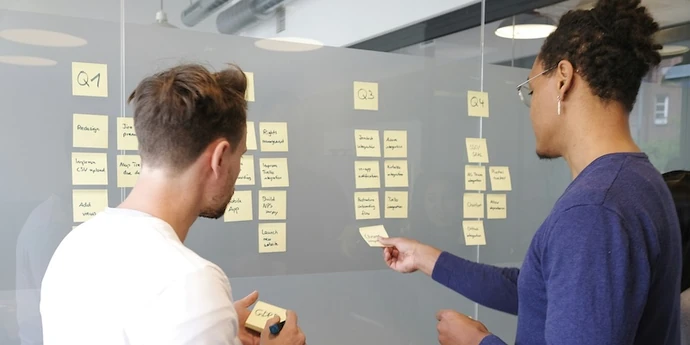- Role and salary
- Interview process and timeline
- Example interview questions
- Interviewing tips
- Preparation plan
Click here to practice 1-on-1 with PM ex-interviewers.
1. DoorDash product manager role and salary ↑
Before we dive into your DoorDash product manager interviews, let’s take a look at the role itself.
1.1 What does a DoorDash product manager do?
Product managers at DoorDash are responsible for defining, building, and scaling the company’s products. They must understand and make product choices that serve the delivery app’s three-sided marketplace: customers, merchants, and dashers (delivery workers). Sometimes, DoorDash PMs may also work on building internal tools (e.g., for HR, hiring, operations).
In general, a PM at DoorDash owns the product vision; sets the roadmap; conducts user research; collaborates with engineering, design, data science, and operations; and drives measurable product outcomes. Every decision must be grounded in data and user needs.
Here are the key competencies of a DoorDash product manager, pulled from DoorDash job descriptions.
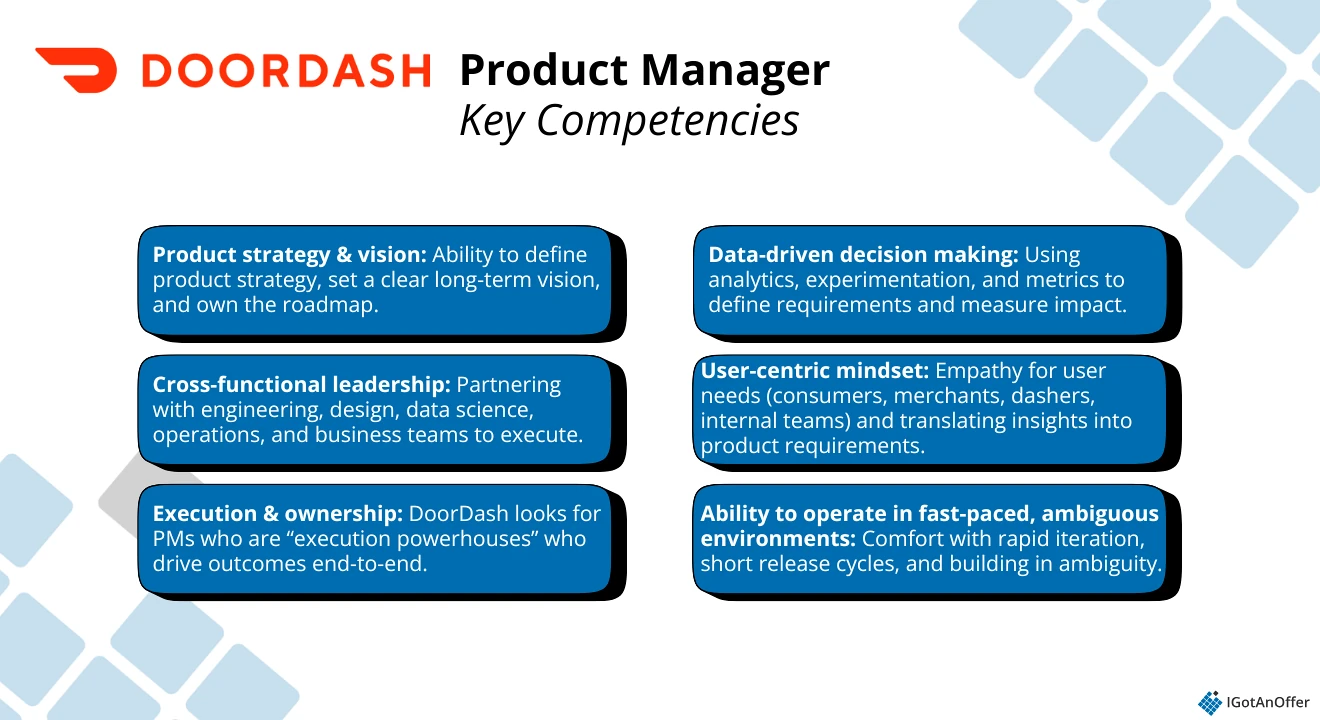
1.2 DoorDash’s product team structure
DoorDash’s product team is structured into eight pillars. Each one supports a different part of DoorDash’s platform.
As a DoorDash PM, you may be in charge of building products that serve any of these eight core pillars. Your work may involve improving delivery logistics, enhancing merchant tools, building consumer-facing features, growing new business verticals, or improving internal systems that help teams and dashers operate efficiently.
DoorDash PMs also regularly ship MVPs, run A/B tests, and iterate based on data. This reflects DoorDash’s fast and experiment-driven culture.
In a Product Leadership interview, Kevin Fu (Senior Director of Product at DoorDash) said:
“The most unique thing about DoorDash is how fast we move. Our product teams sometimes go from problem identification to MPV to shipped in an A/B test in the span of a day. Moving fast is a mentality we have - how do we work most efficiently together to get something done today.”
If you want to be a DoorDash PM, be ready to operate at this level of speed.
To succeed in the role, you’ll need to balance strategic thinking with rapid execution. You’ll frequently work with incomplete information, iterate quickly, and collaborate across multiple functions to drive impact.
Ultimately, DoorDash is looking for PMs who can own a problem end-to-end, move with urgency, and deliver meaningful results on a fast-paced, multi-sided platform.
What skills are required to be a DoorDash product manager?
To be considered for a product manager role at DoorDash, candidates typically need a combination of prior experience, technical skills, and interpersonal capabilities. Based on recent DoorDash PM job listings, common requirements include:
- Typically 5+ years of experience in product management (for standard PM roles)
- Experience in user-facing industries such as e-commerce, technology, or multi-sided marketplaces
- Proven track record of driving product strategy, owning a roadmap, and aligning product vision with business goals
- Ability to work cross-functionally with engineering, design, data science, operations, and other stakeholders.
As a DoorDash PM, you’ll also need to be adept at working with cross-functional teams such as engineering, design, operations, marketing, data analytics, or finance. Any given product you build may impact not just one user segment of DoorDash but all three.
A strong user-centric mindset — empathy for consumers, merchants, dashers, or internal stakeholders — is critical.
1.2 How much does a DoorDash Product Manager make?
Based on Glassdoor’s data computations, the estimated average pay of a DoorDash product manager is 32% higher than other US PMs. The base pay average is $162K a year, while bonuses amount to $58K on average.
As of late 2025, here are the average salaries of the different product manager levels at DoorDash, based on Levels.fyi data.
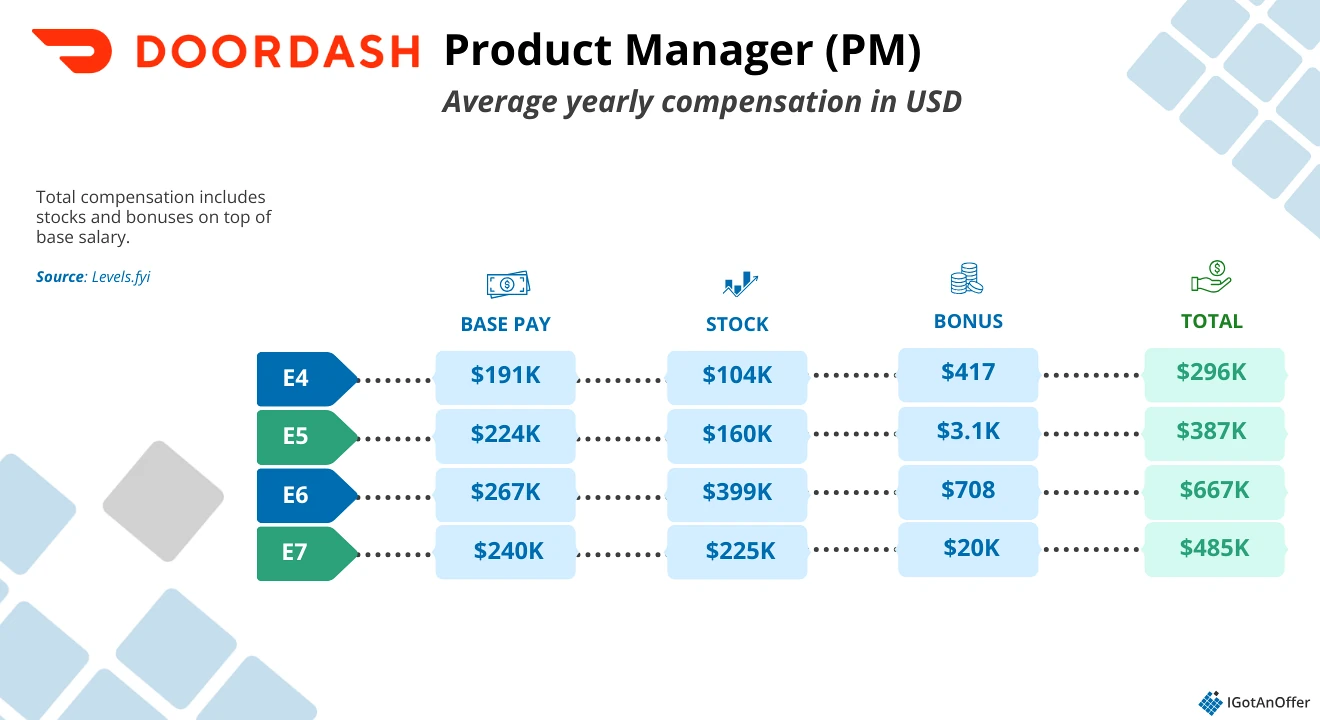
Ultimately, how you do in your interviews will help determine what you’ll be offered. That’s why hiring one of our ex-DoorDash interview coaches can provide such a significant return on investment.
And remember, compensation packages are always negotiable, even at DoorDash! So, if you do get an offer, don’t be afraid to ask for more. If you need help negotiating, check out our PM salary negotiation guide for tips and consider booking one of our salary negotiation coaches to get expert advice.
2. DoorDash product manager interview process and timeline ↑
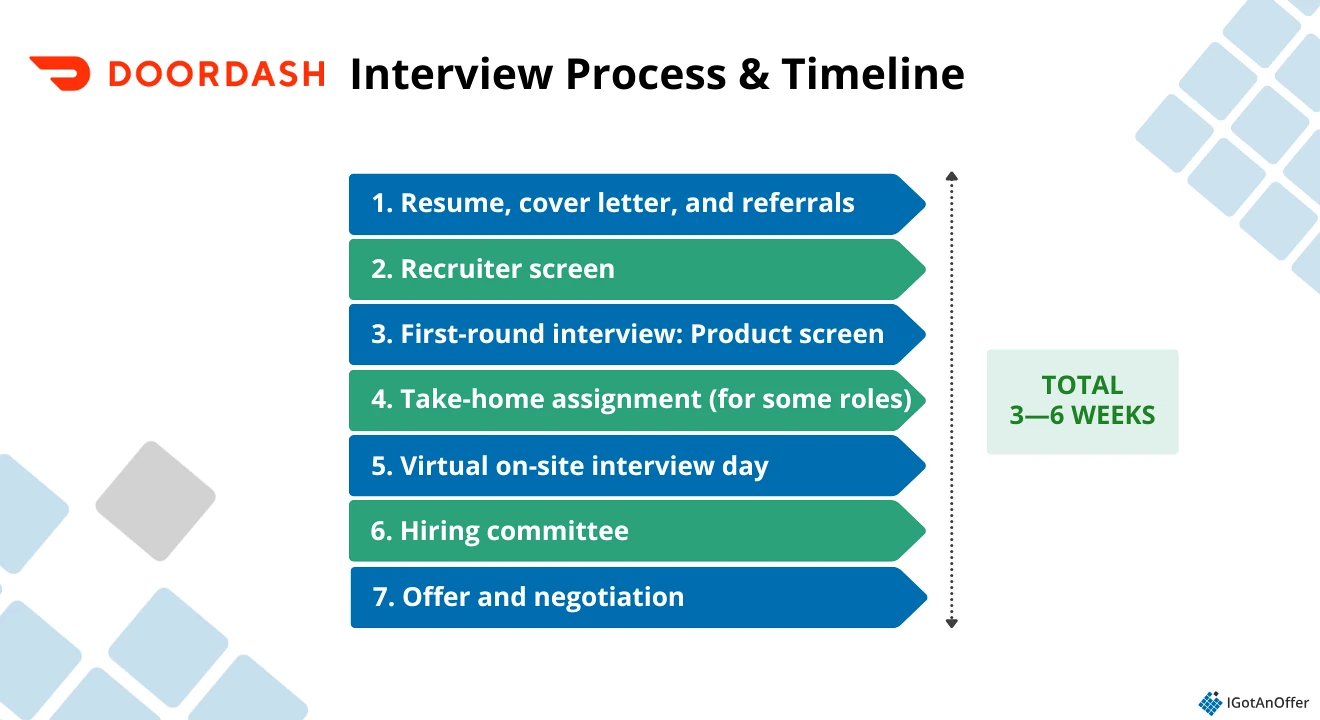
The interview process for DoorDash product managers typically takes three to six weeks from application to offer, depending on scheduling, the number of interview rounds, and your level.
While timelines can vary, most candidates go through a structured set of steps designed to assess both product sense and cross-functional collaboration skills.
Here’s a high-level overview of the steps you may face along the way:
- Resume, cover letter, and referrals
- Recruiter screen (30 mins)
- First-round interview: Product phone screen (1 case study, 45 mins)
- Take-home assignment (for some PM roles)
- Virtual on-site interview day (4 interviews, 30-45 mins each)
- Hiring committee
- Offer and negotiation
Below, we detail each stage of the interview process and explain what DoorDash interviewers are looking for.
2.1 Resume, cover letter, and referrals ↑
First, recruiters will look at your resume and assess if your experience matches the open position. This is the most competitive step, and millions of candidates do not make it past this stage.
You’ll need a quality resume that is tailored specifically to DoorDash product manager roles. If you have yet to apply, you can use our product manager resume guide to optimize your application.
If you’re looking for expert resume feedback, you can also get input from our team of ex-FAANG recruiters, who will cover what achievements to focus on (or ignore), how to fine-tune your bullet points, and more.
As with most companies, it can also be helpful to get an employee or contact at DoorDash to refer you to the recruiting team. In our experience, the most straightforward way to do this is to directly contact DoorDash employees you may be connected to on LinkedIn.
2.2 Recruiter screen (30 min) ↑
The first step in the DoorDash PM interview process is usually a screen with a recruiter. During this short 30-minute call, recruiters will want to discuss your work history, expectations for the PM level you’re applying for, and other key factors.
Ultimately, recruiters want to confirm that your background aligns with the role and to know if you've got a real chance of getting the job at all. Be prepared to explain your work experience. Be concise but compelling — highlight relevant product experience, marketplace knowledge, and any prior PM impact.
Your recruiters will also talk to you about DoorDash and its interview process. This is your chance to ask clarifying questions. The recruiter will be your point of contact for the rest of the interview cycle, and building rapport can help you navigate scheduling and follow-ups.
2.3 First-round interview: Product phone screen (1 case study, 45 mins) ↑
After your recruiter screen, you typically move on to your first-round interview, which is the product phone screen, according to the DoorDash product careers page. This interview is done with the hiring manager or a senior PM, and lasts 45 minutes.
This first-round interview is designed to assess two things:
- Product sense: Discuss what the product achieves, how it can be improved, and ideas for enhancing user engagement.
- Product prioritization: Show your framework for determining potential pain points and how you prioritize them.
You’ll be given one case study to work through during the interview. Your interviewer will likely ask you follow-up questions to probe into your strategic thinking and product knowledge.
This round helps the hiring team determine whether you can handle the core responsibilities of the role before advancing to more intensive evaluation stages.
See our guides to learn more about product sense questions and product prioritization questions.
2.4 Take-home assignment (for some PM roles) ↑
For certain DoorDash PM roles, the interview process includes a take‑home assignment or case study. The format can vary, and whether you get one depends on the team, hiring manager, and perceived fit.
The purpose of this stage is to allow you to demonstrate your structured problem-solving, analytical thinking, and product sense in a realistic scenario.
You may receive a dataset containing multiple factors (such as orders, restaurants, or drivers), which you’ll need to analyze to inform product decisions.
This format lets you work through a problem in depth. It’s an opportunity to show interviewers how you approach trade-offs, evaluate options, and consider the impact of your recommendations on DoorDash’s multi-sided marketplace.
Here are the possible formats this stage can take:
- Case study / product exercise: Design or improve a product feature, or propose a roadmap for a hypothetical DoorDash scenario.
- Analytical exercises / data assignments: Analyze data, calculate metrics, or make recommendations based on trends.
- Format and timing: Completed remotely over several hours, submitted as slides, documents, or reports.
Once your take-home assignment is submitted and reviewed, successful candidates move on to the final on-site interview loops.
2.5 Virtual on-site interview day (4 rounds, 30-45 min) ↑
Lastly comes the most challenging stage: the virtual on-site interview day. This entire process lasts about three hours total. You’ll do four interviews with several different people from product, design, engineering, and sometimes other teams, too.
Each interview will last 30 to 45 minutes, but the exact format can vary depending on the interviewer and team. During some onsite interviews, you may encounter whiteboarding or structured problem-solving exercises.
The onsite loops are designed to evaluate your product sense, analytical thinking, prioritization skills, and leadership/behavioral capabilities in a more rigorous, multi-interviewer setting.
Certain interviews may also probe technical knowledge or operational strategy. This is relevant particularly for PMs working in logistics, merchant operations, or data-driven teams. Expect to be asked product, prioritization, behavioral, and analytical questions. We dive deeper into each of these question types in section 3.
Overall, the virtual on-site interview day is designed to simulate the real-world challenges a DoorDash PM faces.
After the onsite interviews, feedback from all interviewers is collected and reviewed by the hiring committee, which ultimately decides whether to extend an offer.
2.6 Hiring committee review ↑
After the final on-site interview loops, all interviewer feedback is consolidated and reviewed by the DoorDash hiring committee.
This committee typically includes senior PMs, managers, and sometimes leaders from related functions. Their role is to make sure that hiring decisions are consistent, fair, and aligned with DoorDash’s product needs and values. Feedback from each interviewer is discussed collectively to determine whether you meet the bar for the role and if you are a good cultural and functional fit for the team.
During this stage, the committee carefully evaluates your performance across multiple dimensions: product sense, analytical thinking, execution capability, leadership, and collaboration.
Being invited to this stage means you’ve successfully demonstrated the core skills and potential that DoorDash is seeking. While candidates do not interact directly with the hiring committee, the outcomes of this review determine whether you advance to the final stage: the offer.
2.7 Offer and negotiation ↑
If the hiring committee approves your candidacy, you will receive an offer from DoorDash, typically extended via your recruiter. The offer package usually includes base salary, bonus or equity components, and benefits, and it may be tailored depending on your experience and level.
At this stage, the recruiter will discuss the details of the compensation package and answer any questions about benefits, start date, or team logistics.
This is also the time to negotiate your offer, if necessary. DoorDash expects candidates to advocate for themselves professionally and provides room for discussion, particularly around salary, equity, or role level. Once both sides agree, you formally accept the offer and transition into onboarding.
3. DoorDash product manager example interview questions ↑
Below, we've compiled lists of real questions from DoorDash product manager interviews. To help you structure your preparation, we've organized them into four categories.
These question categories are based on real DoorDash PM interview candidate reports, mainly from Glassdoor:
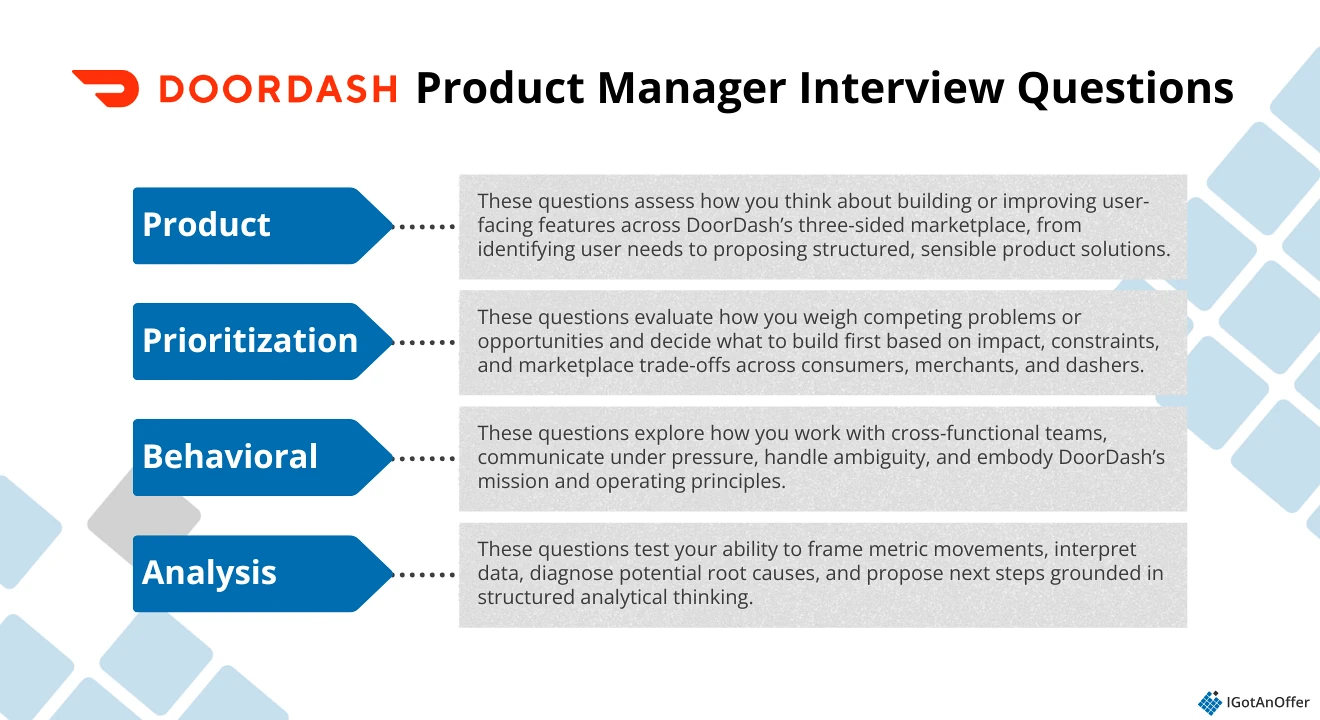
Now that you have a general understanding of DoorDash’s interview questions, let's get into the first and most frequently asked question category: product.
3.1 Product questions
DoorDash frequently asks product design, improvement, and strategy questions to assess your overall product sense, user-centricity, and ability to think through trade-offs. Compared with other tech companies, the questions in this category are relatively predictable.
Interviewers want to see how you think end-to-end about a product: identifying issues, proposing solutions, prioritizing trade-offs, and considering the broader business impact while balancing the needs of consumers, merchants, and dashers.
Product questions can be split into three sub-categories:
- Product design: Evaluate your ability to create new features or experiences that meet user needs across DoorDash’s marketplace (customers, merchants, dashers).
- Product improvement: Assess how you identify pain points and optimize existing features to enhance usability, engagement, or operational efficiency.
- Product strategy: Test your capacity to prioritize initiatives, make trade-offs, and align product decisions with DoorDash’s business goals and multi-sided marketplace dynamics.
Across these questions, here are two common themes you should also prepare for:
- Certain digital products frequently come up in questions: DoorDash, OpenTable, Turo, and Spotify.
- The post-booking experience is a common topic in product sense and design questions at DoorDash, as it’s a common challenge in service marketplaces. (Once the user has purchased, the marketplace loses control, and the user experience is mostly in the hands of the service provider.)
For this 45-minute interview, you may get a case study or prompt ahead of your interview. You’ll be asked to discuss 1 to 3 products, with follow-up questions from your interview.
Here are some sample product questions to practice with.
Example product questions asked at DoorDash product manager interviews:
Product improvement
- Pick a mobile app, walk me through the design, and explain how you would improve it.
- How would you improve the post-booking experience on [DoorDash, Airbnb, OpenTable, Instacart, TaskRabbit, airline]?
- How would you improve the engagement on Spotify or the recommendation algorithm for Airbnb?
- How would you find out what the biggest issue is with Airbnb, and how would you set out to fix it?
Product design
- What’s your favorite product and why?
- Design a product for teens to find places to eat.
- Build the payment API for a charity event.
Product strategy
- What new products do you think DoorDash should launch?
- How would you run a promotion to increase top-line, in-store revenues at Target?
- How would you increase Walmart’s revenue by decreasing prices?
- Triple revenue for Spotify in the next 3 years.
If you'd like to learn more about answering this kind of question, then check out our guides on product sense questions, product improvement questions, and product design questions.
3.2 Prioritization questions
DoorDash asks prioritization questions to assess your ability to make structured decisions under constraints, balance trade-offs, and focus on initiatives that deliver the most impact. They want to see your strategic thinking and execution judgment.
Prioritization questions often appear as follow-ups to product improvement exercises. After discussing potential ways to improve a feature or product experience, you may be asked:
- Which improvement would you implement first, and why?
- How would you allocate limited engineering or operational resources across multiple initiatives?
- How do you decide between addressing a customer-facing problem versus a merchant- or dasher-facing problem?
DoorDash emphasizes multi-sided trade-offs, reflecting its marketplace model. You’re expected to consider consumer, merchant, and dasher impact, alongside business metrics, operational constraints, and scalability.
You should be able to clearly articulate a rationale for your prioritization choices. Show interviewers that you can weigh data, user impact, and business goals in a structured way.
Here are some sample questions to practice with.
Example prioritization questions asked at DoorDash program manager interviews:
- What are the biggest issues with [OpenTable, TaskRabbit]? Prioritize solving these issues.
- What are the biggest post-booking challenges with [DoorDash, OpenTable]? Prioritize solving these issues.
- How do you prioritize a backlog?
- How do you settle priorities when you have limited resources?
For more guidance on this type of PM interview question, check out our guide on product prioritization questions.
3.3 Behavioral questions
You can expect behavioral questions throughout the DoorDash interview process. Your interviewers will use them to assess how much you align with the company’s mission and core values.
These questions typically probe your cross-functional leadership, problem-solving approach, decision-making style, and ability to influence outcomes without direct authority.
Interviewers are looking for examples from your past experience that demonstrate your ability to:
- Collaborate with engineering, design, operations, or business teams to deliver impact.
- Resolve conflicts or navigate trade-offs between competing priorities.
- Take ownership of a problem end-to-end, from identifying the issue to delivering measurable results.
- Learn from failures or setbacks and adapt processes accordingly.
With behavioral questions, a strong answer clearly sets the context, explains the action you took, and highlights the measurable outcomes.
Example behavioral questions asked at DoorDash product manager interviews:
- Tell me about yourself.
- Why do you want to work at DoorDash? (See sample answer from Amazon interviews.)
- Tell me about your experience as a product manager.
- Tell me about a successful product launch and missteps along the way.
- Tell me about a time you had to manage a major project.
- Tell me about a time you resolved a conflict between stakeholders.
- Tell me about your biggest failure.
You can find more samples and learn a step-by-step process for answering behavioral questions through our guide: How to answer behavioral questions at tech companies. This guide primarily focuses on Meta, but it can be applied to any company.
For even more practice, check out our guide on PM behavioral interview questions, which includes sample answers to the top 8 most commonly asked.
3.4 Analysis questions
DoorDash also includes analysis questions to test your ability to: 1) make data-driven decisions, 2) interpret metrics, and 3) identify the root causes of problems.
These questions are particularly common for PM roles that focus on growth, operations, or marketplace efficiency. In those domains, understanding and acting on metrics is critical.
The most frequently reported type of analysis question is the metric change question. You’ll be presented with a scenario in which a key performance indicator (KPI) has changed — for example, a drop in conversion rate or app installs — and you’ll need to diagnose the underlying cause and propose a solution.
Interviewers are evaluating both your analytical rigor, your structured problem-solving approach, and your ability to communicate findings clearly to cross-functional stakeholders.
Example analysis questions asked at DoorDash product manager interviews:
- The conversion rate has decreased by 10% on the DoorDash app. What’s causing this?
- Installs of the DoorDash app have decreased by 35% in the Apple App Store. What’s causing this?
- Orders have dropped by 20% month over month on the DoorDash app. How do you go about solving this?
If you'd like to learn more, then check out our separate guide on product metric change questions.
4. DoorDash product manager interviewing tips ↑
You might be a fantastic product manager, but unfortunately, that’s not necessarily enough to ace your interviews at DoorDash. Interviewing is a skill in itself that you need to learn.
Let’s look at some key tips to make sure you approach your interviews in the right way.
4.1 Come as your best self at work
Whether you’re coming in for a virtual or on-site interview, be punctual and arrive at least 15 minutes before your scheduled interview. As for your attire, dress comfortably but keep it smart, polished, and work-appropriate.
If you have a virtual interview, make sure you’re in a distraction-free environment. Test your equipment beforehand and preview your interview link an hour before to ensure everything works fine.
4.2 Ask clarifying questions
Some of the questions you will be asked will be quite ambiguous. In those cases, you’ll need to ask clarifying questions to get more information about the problem and to reduce its scope.
Jumping straight in without asking questions first will be a red flag to the interviewer and hinder your answer.
But don’t just ask any questions; be smart about them.
“Sometimes the strongest signal you send is what you want to know about the problem,” Laura Terheyden, former head of Recruitment at Airbnb, says in this Airbnb interview cheat sheet.
For instance, if you were asked, “What would be your 10-year strategy if you were CEO?” you can respond by asking some questions about the company’s current situation and any business objectives the interviewer may have in mind. This way, you’ll have a better understanding of what the company needs in the coming years and make more informed strategic decisions.
4.3 Check in with your interviewer
Interviewers differ in their willingness to provide hints. Some may wait for you to ask about customer or product details, while others expect you to make assumptions on your own.
Gauge this by asking a direct question or specifying your assumptions. If the interviewer tends to offer specifics, they’ll engage. If not, limit additional questions to demonstrate your ability to make decisions independently.
4.4 Keep your answers concise and high-level
One Reddit user who was part of the team that created DoorDash’s AI interview tool shared this valuable tip: “Practice articulating your thoughts clearly and concisely, as time management is crucial in these interviews.”
Your interviews will happen within a time limit. You’ll need to be mindful about maximizing your minutes and communicating your story effectively. Practice answering interview questions ahead of time, think of past work experiences you can reference in your stories, and learn as much as you can about DoorDash’s own company culture and values.
This Reddit user also emphasizes the importance of familiarizing yourself with DoorDash’s business model, recent initiatives, and challenges in the food delivery industry, stating that, “Your genuine passion for the product and understanding of the company's goals can really set you apart.”
4.5 Emphasize cross-functional collaboration
DoorDash PMs work closely with engineering, design, sales, support, and customer-facing teams. The ability to influence without authority is essential in cross-functional collaboration.
Demonstrate your ability to:
- Influence without authority: Show how you've driven alignment when you don't control resources.
- Build consensus among diverse stakeholders: Enterprise products have many constituents. Prove you can navigate competing priorities.
- Communicate technical concepts to non-technical audiences: Your sales team needs to understand what you're building and why it matters.
- Navigate organizational complexity: Oracle is a large company. Show you understand how to work in complex environments.
- Manage conflicting priorities across teams: Engineering wants to pay down tech debt. The sales team wants new features yesterday. Show how you balance these tensions.
Make sure your answers to behavioral questions showcase these collaboration skills using specific examples.
4.6 Justify your choices
DoorDash wants to see the reasoning behind your answer, so make sure to justify each decision you make. You'll need to make plenty of trade-offs as you arrive at a solution, so be sure to call them out.
DoorDash favors candidates who can work with a sense of urgency, as the company’s goal is always to “launch solutions quickly, test them, and make changes as needed.” It also has a “not either/or” culture — meaning, it always spurs its leaders to come up with solutions that balance speed and quality.
“We’re not satisfied picking between options or sacrificing one thing for another,” as stated on the company’s Mission & Values page. Keep these in mind when explaining your choices.
4.7 Demonstrate a data-driven approach
DoorDash is looking for product managers who can make decisions based on data and can judge everything they do by relevant metrics. “We take small ideas and help them grow using data and rigorous testing,” as stated in their values statement.
In an interview situation, it's okay to make assumptions because you might not have access to the facts and data. But you need to make it clear that in real life, you would seek out that data and that your approach would be highly data-driven.
As we’ve mentioned, DoorDash loves a sense of urgency in candidates. Show your bias for action by not getting into analysis paralysis and always having a plan for testing after execution to show how you use data to serve your growth mindset.
4.8 Demonstrate user empathy
DoorDash wants product managers who can empathize with its users as a company that’s “customer-obsessed, not competitor-focused.”
When answering a PM interview question, your first instinct should be to focus on the user. Identify who uses the product, why, and what the use cases are. Avoid designing a product based solely on personal preferences.
As part of your prep, think hard about the three key users of DoorDash — the customers, merchants, and dashers — their pain points, and user journey on the app.
4.9 Learn a framework for answering questions
DoorDash wants to see structured thinking. Using a consistent framework helps you organize your answers and demonstrate clear reasoning.
For product design questions, you can learn more about using the BUS (Business objective, user problem, solution) method here.
For behavioral questions, the STAR method (Situation, Task, Action, Result) is a popular approach that’s easy to remember. However, we've found that candidates often find it difficult to distinguish between Task and Action. Some also forget to include lessons learned in the results step, which is especially crucial when discussing past failures.
So, we've developed a better alternative: the IGotAnOffer SPSIL method (Situation-Problem-Solution-Impact-Lessons) to address some of the pitfalls we've observed. You can dive deeper into the IGotAnOffer SPSIL method here.
The bottom line is that DoorDash wants to see you extract learning from experiences and apply it forward. Many candidates skip this step, leaving interviewers to wonder if you actually learned anything.
Practice this framework until it becomes natural, but don't let it constrain your thinking. The framework should help you communicate clearly, not force artificial structure.
4.10 Don’t get stuck on a framework
As we just said above, frameworks are extremely helpful. However, some of our successful candidates have mentioned that excessive reliance on frameworks may hinder performance.
During the interview, trust your instinct, and don’t be afraid to deviate from the framework if needed. A framework is there to help you craft a better answer, not make you twist your answer to fit the framework.
4.11 Center on the company’s core values
It’s important to study any company’s culture guide when applying. The same goes for DoorDash, which has very specific Mission & Values. Study them well and align your interviewers to better align with them when possible.
When answering behavioral questions, share stories from past experiences that align with DoorDash’s core values. When designing a product or a strategy, consider how your answer aligns with these values.
4.12 Treat the interview like a conversation
Keep in mind that the interview is a two-way discovery process. While the interviewer assesses if you’re a good fit for DoorDash, you’re also evaluating if the company aligns with your aspirations and preferences.
4.13 Save questions and feedback for your interviewer
You’ll have a few minutes to ask your interviewer questions as the interview wraps up. Arriving without questions may suggest a lack of interest in the company or the role, so you make sure you have a few prepared beforehand.
Prepare thoughtful questions that go beyond what you could have found out online. You can ask about career growth opportunities or specific ways of working in the company. It's your chance to showcase genuine curiosity and investment in the conversation.
5. Preparation plan ↑
Now that you know what questions to expect, let's focus on preparation.
Below, you’ll find links to free resources and four introductory steps to help you prepare for your DoorDash PM interviews.
5.1 Deep dive into the product/organization
As you can see from the questions above, it will be very difficult to secure an offer from DoorDash if you come to the interviews without having researched the company first. The questions will frequently center around real-life problems the DoorDash product team is facing now or has faced in the past.
Here are some resources to get you started on the right track:
- DoorDash’s mission and values
- DoorDash’s financials
- DoorDash’s earning calls
- DoorDash’s newsroom
- DoorDash statistics (by Business of Apps)
5.2 Learn a consistent method for answering PM interview questions
As mentioned previously, DoorDash will ask you questions that fall into categories like behavioral, product, prioritization, and analysis questions. Approaching each question with a predefined method will enable you to build strong interview habits.
Then, when it comes time for your interviews, these habits will reduce your stress and help you to make a great impression.
If you’re just looking for a jump-off point, you can start learning about the different question types you’ll need to master in the following PM interview guides:
General
Product
- Product sense questions
- Product design questions
- Product improvement questions
- Product execution questions
- Product strategy questions
Others
Once you’re in command of the subject matter, you’ll want to practice answering questions. But by yourself, you can’t simulate thinking on your feet or the pressure of performing in front of a stranger. Plus, there are no unexpected follow-up questions and no feedback.
That’s why many candidates try to practice with friends or peers.
5.3 Practice with peers
If you have friends or peers who can do mock interviews with you, that's an option worth trying. It’s free, but be warned, you may come up against the following problems:
- It’s hard to know if the feedback you get is accurate
- They’re unlikely to have insider knowledge of interviews at your target company
- On peer platforms, people often waste your time by not showing up
For those reasons, many candidates skip peer mock interviews and go straight to mock interviews with an expert.
5.4 Practice with experienced PM interviewers
In our experience, practicing real interviews with experts who can give you company-specific feedback makes a huge difference.
Find a DoorDash product manager interview coach so you can:
- Test yourself under real interview conditions
- Get accurate feedback from a real expert
- Build your confidence
- Get company-specific insights
- Learn how to tell the right stories better
- Save time by focusing your preparation
Landing a job at a big tech company often results in a $50,000 per year or more increase in total compensation. In our experience, three or four coaching sessions worth ~$500 make a significant difference in your ability to land the job. That’s an ROI of 100x!
Click here to book product manager mock interviews with experienced PM interviewers.






